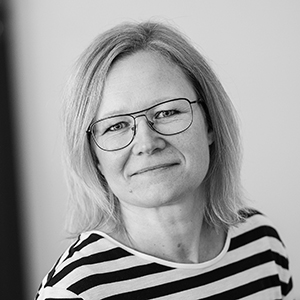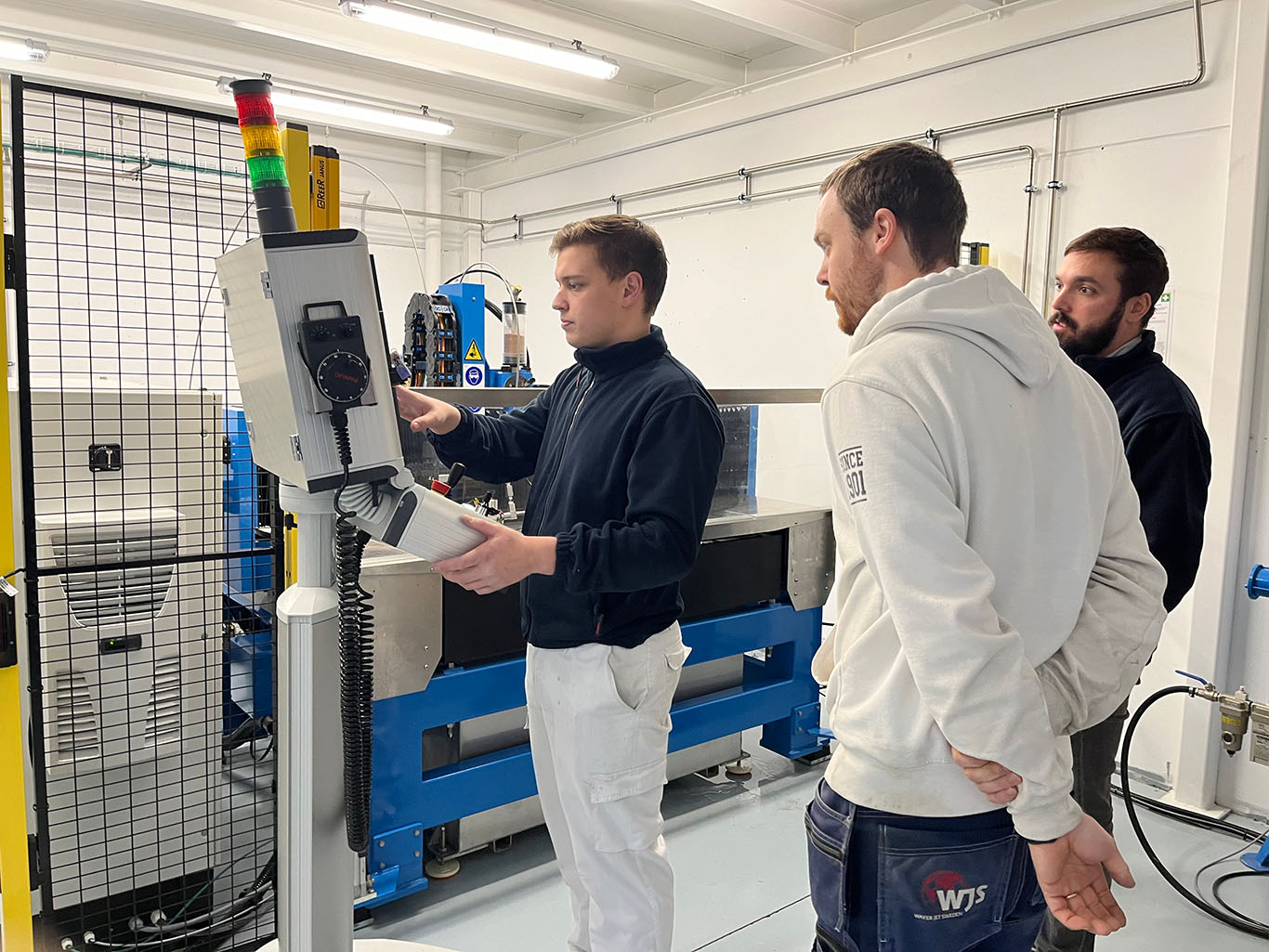
New micro cutting technology installed
Technical ceramics & micro waterjet – Part 3
Nanoker from Spain specialize in technical ceramics and advanced nanocomposites for various extreme application. This time they are pushing the boundaries using micro waterjet technology. After winning a tender from CERN they scanned the market for a suitable machine system. After a thorough evaluation they decided for a NCM 10 Micro Machine from Water Jet Sweden. The first challenge was to win the tender, second to find and select the right machine system and now, thirdly, to implement the new technology into their own production flow.
Preparing the team
Well ahead of the machine delivery the CAD/ CAM and Machine Training was conducted, preparing the Nanoker team for their new workstation and technology. All Water Jet Sweden’s customer training follow the same basic agenda, but each session is adapted to the customer’s specific application and previous experience of the participants.
– The operators of this machine had good general knowledge and previous experience from CAD/CAM and CNC machines with was a big advantage, tells Christian Persson, System Engineer at Water Jet Sweden. That enabled us to also go more into detail about their specific tasks.
The software training could be conducted online, but the machine training was carried out at Water Jet Sweden HQ in Ronneby, Sweden, as part of the Factory Acceptance Tests. Except for the basic machine operation skills, the training covered workflow routines on how to adjust settings before cutting new parts or when changing material characteristic or thickness. For every new set of parts, the machine needs to be finetuned to get perpendicular cuts with tolerances at +/- 0.02 mm.
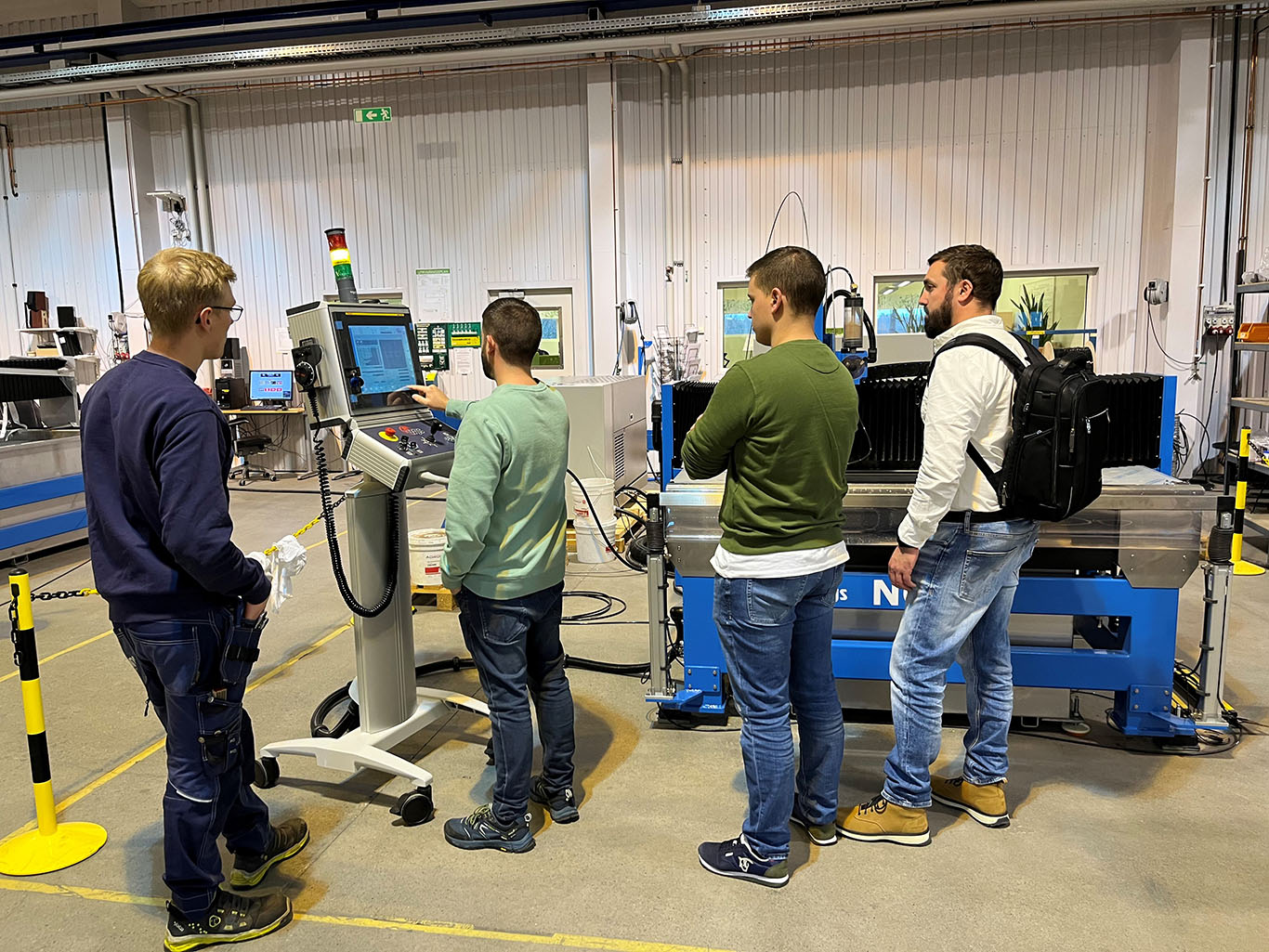
Initial machine training in Production Hall 2 at Water Jet Sweden HQ in Ronneby, Sweden
Setting up the workstation
While training was conducted in Sweden the factory in Spain was preparing the area of the new workstation. It would be placed adjacent to the rest of the CERN production line but in a separate room to screen out things like noise, damp and abrasive dust. Connections for water, electricity, air and a designated space for the machine was all set when the machine arrived.
– We unloaded the machine with a forklift, but since the ceiling height was lower where the workstation would be, we had to put it in place with skates, tells David Olsson, technician at Water Jet Sweden.
Measuring the perpendicularity of the machines after installation is standard procedure at Water Jet Sweden. But for the NCM 10 Micro machine, laser measurement and ball bar verification are also conducted after installation, unlike traditional waterjet machines. Other machine models are just laser measured and ball bar tested in the factory, before delivery.
The layout of the workstation was thoroughly designed early in the project to have a small footprint and yet be easy to service and operate. The high-pressure pump is placed inside the safety zone, since it is started up in the beginning of every shift and then controlled from the operator panel.
The tip-container for abrasive waste is also placed inside the safety zone. When it gets full it is easily removed with a pallet jack, pulled out through the safety door, and emptied with a forklift outside the premises. But the abrasive pressure vessel was placed outside the safety zone to be able to refill abrasives while running the machine.
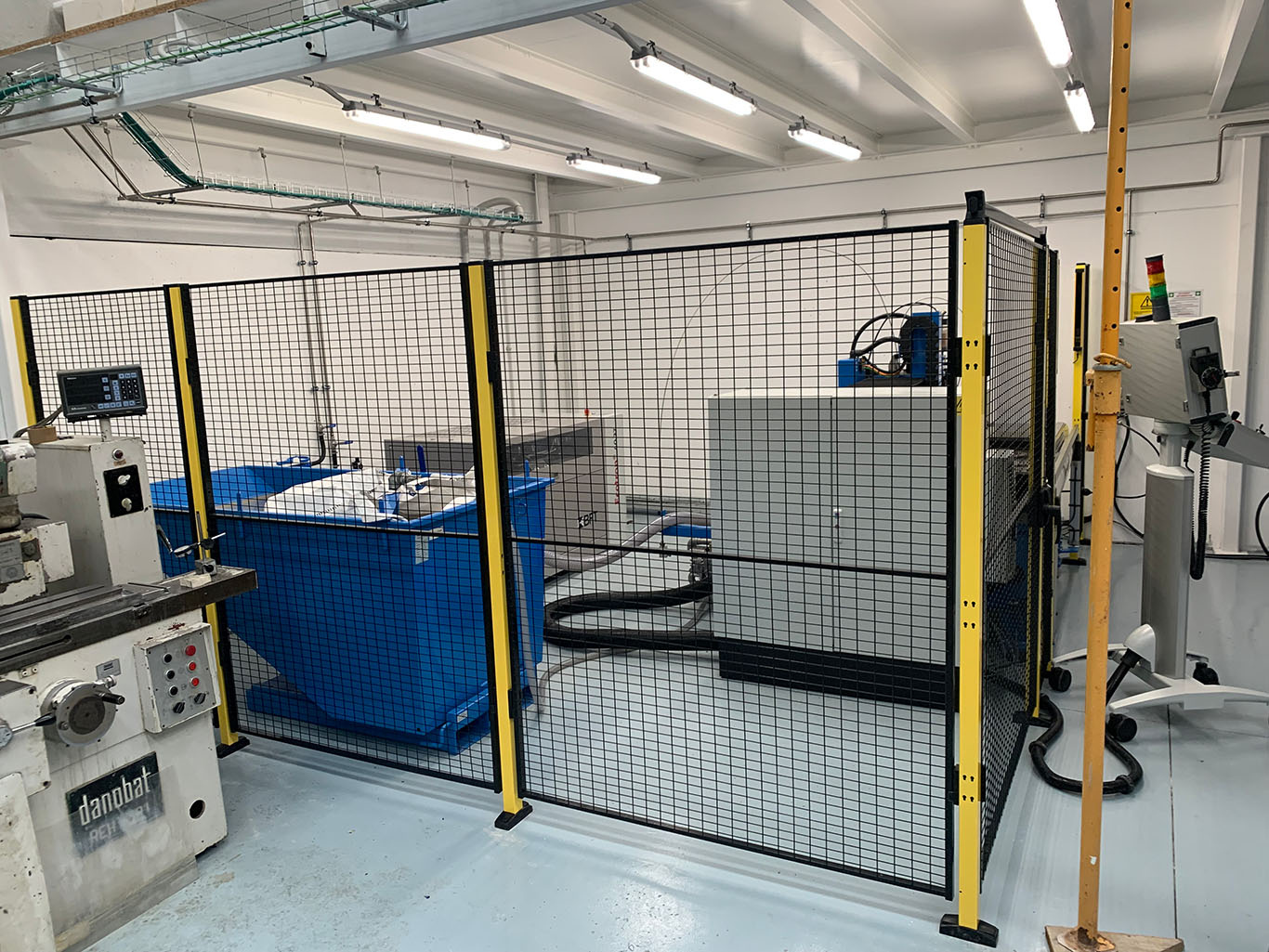
High Pressure Pump and Tip Container inside the safety zone
Getting started
Training is always finalized at the customer site in their own environment, making sure the customer gets started with the type of production the machine was purchased for, as part of final testing and machine acceptance procedure.
– After installation we also had complementary operator training to repeat handling, maintenance and safety around the workstation, tells David Olsson. It is good to repeat this after the workstation is in place in the environment it is supposed to be operated.
Since waterjet cutting is about controlling natural forces, it is an advantage to have good knowledge of the specific machine and materials to get the perfect compensation and cutting speed, when processing at fine tolerance. An electronic microscope with a handheld device was used to recurrently check tolerance and surface quality.
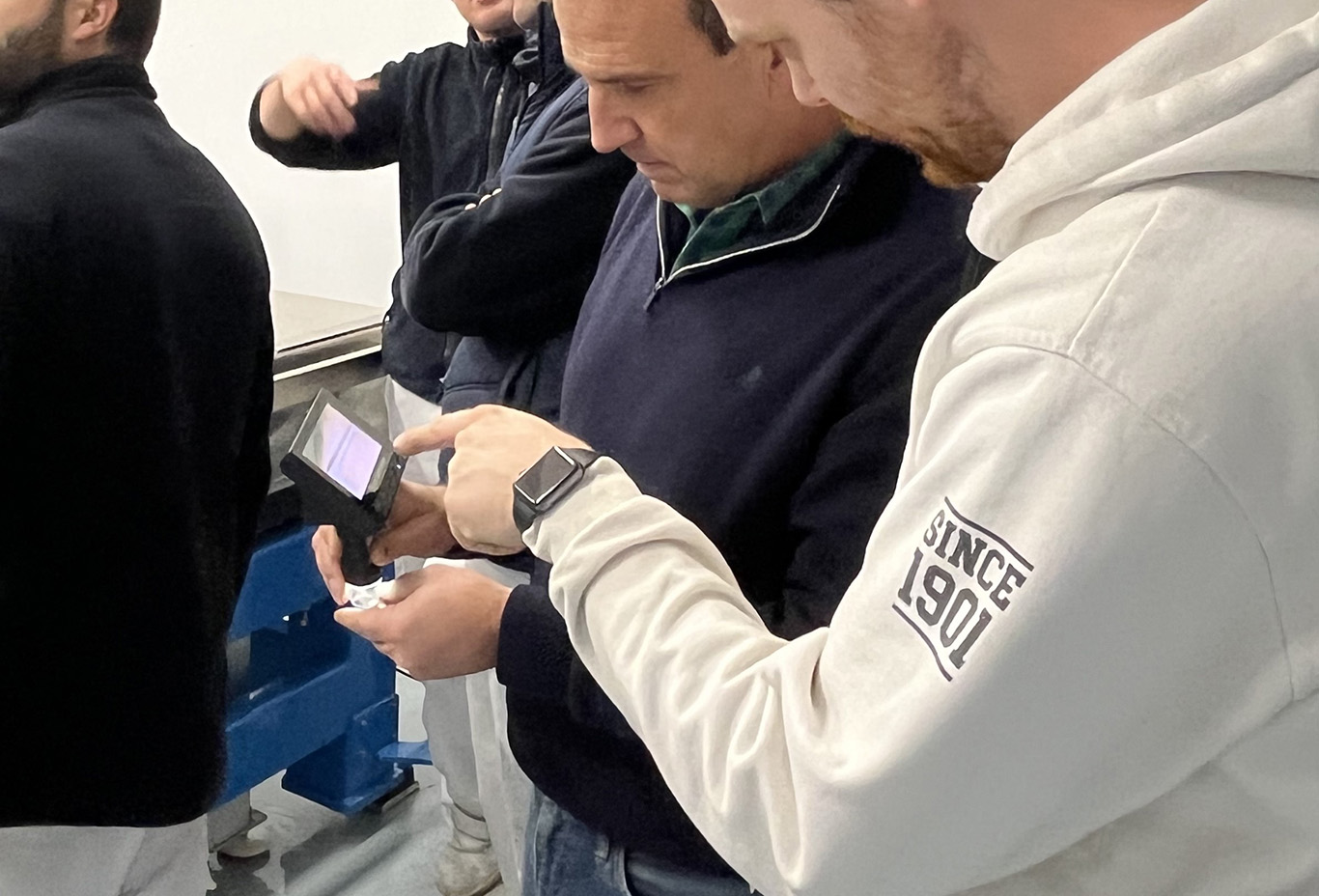
A handheld microscope was used to pre-check shape and surface roughness
– I stayed until the customer had produced a series of approved parts, tells David Olsson. After leaving, I have not heard anything from our customer support team, which is positive. When I left, they did the all finetuning themselves, and I believe they are well prepared to run their production for CERN as expected.
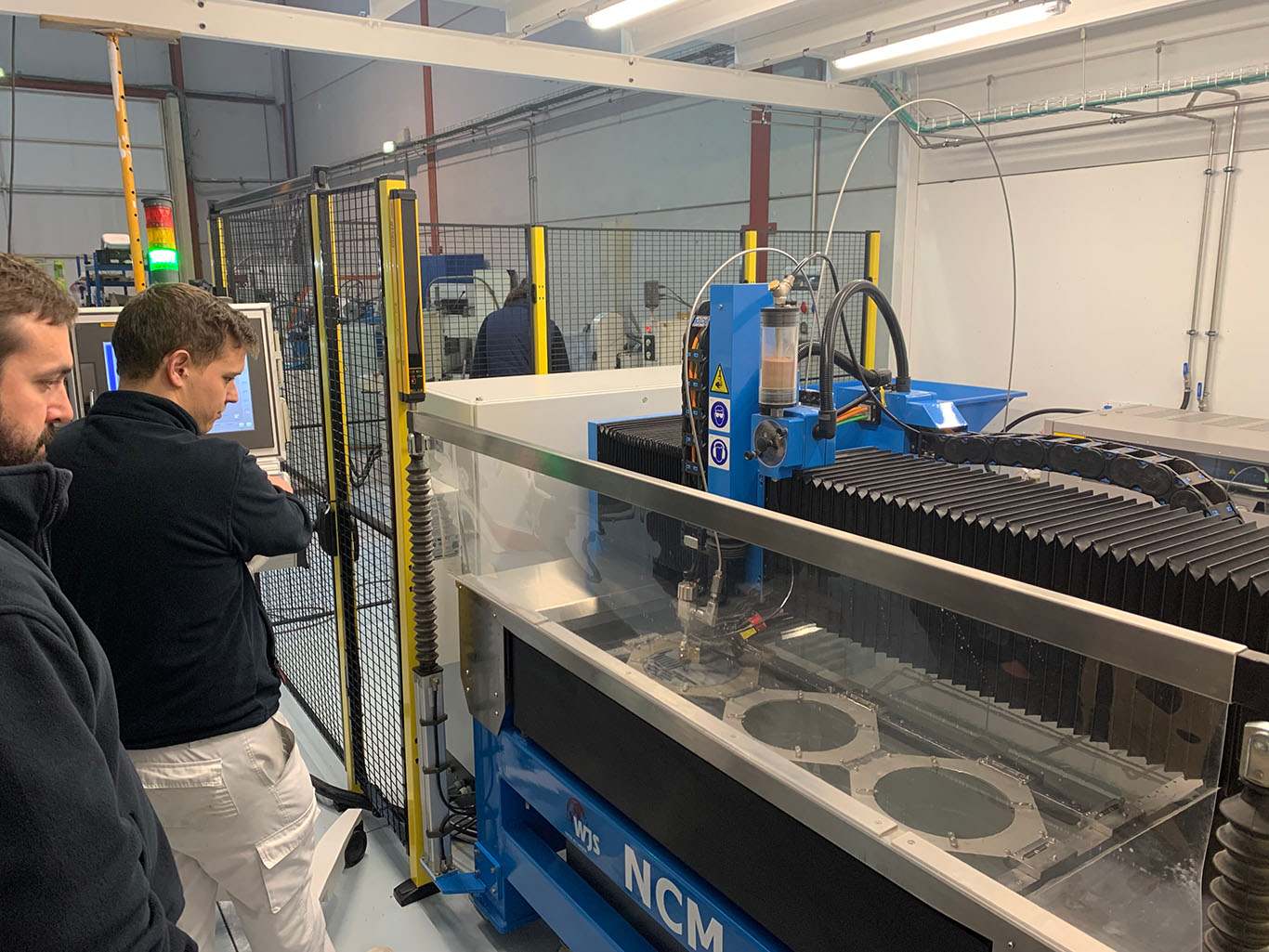
Up running, producing high tech ceramic parts for CERN accelerators
Mr. Sergio Rivera, Product and Business Development Manager at Nanoker Research S.L. sums up the project.
– The micro-water jet machine enables to Nanoker the access to a very precise technology to cut very hard materials in “close-to” 2D geometries. Apart from the business related to Big Science industry, it will present new avenues for the company to produce parts according to customer specifications with a different machining strategy. This technology will enable Nanoker to access other markets as well, such as industrial market. The production of this “close-to” 2D geometries in hard ceramics were limited to electrically conductive materials by using wire-EDM, and now, thanks to micro waterjet, Nanoker can machine both electrically and non-electrically conductive materials, Sergio concludes.
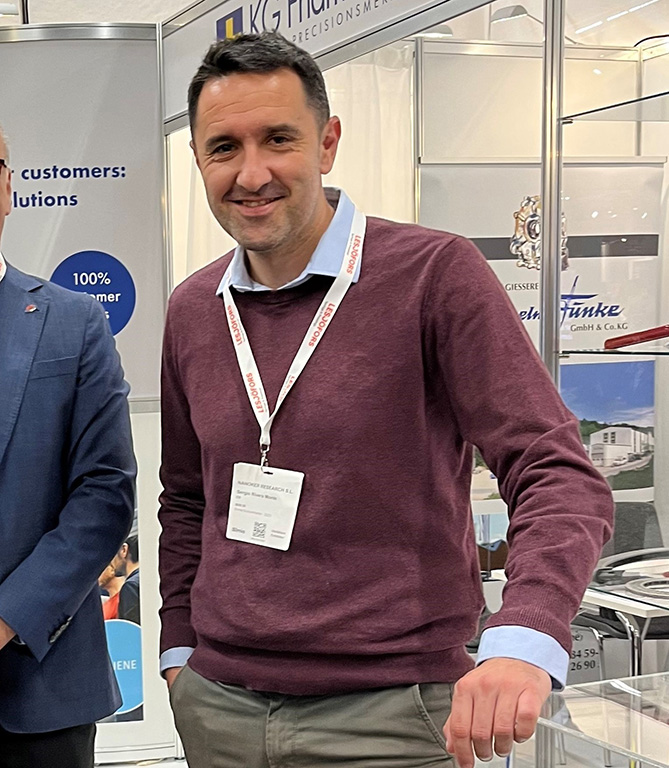
Mr. Sergio Rivera, Product and Business Development Manager at Nanoker Research S.L
https://nanoker.es/
https://www.waterjetsweden.com/






